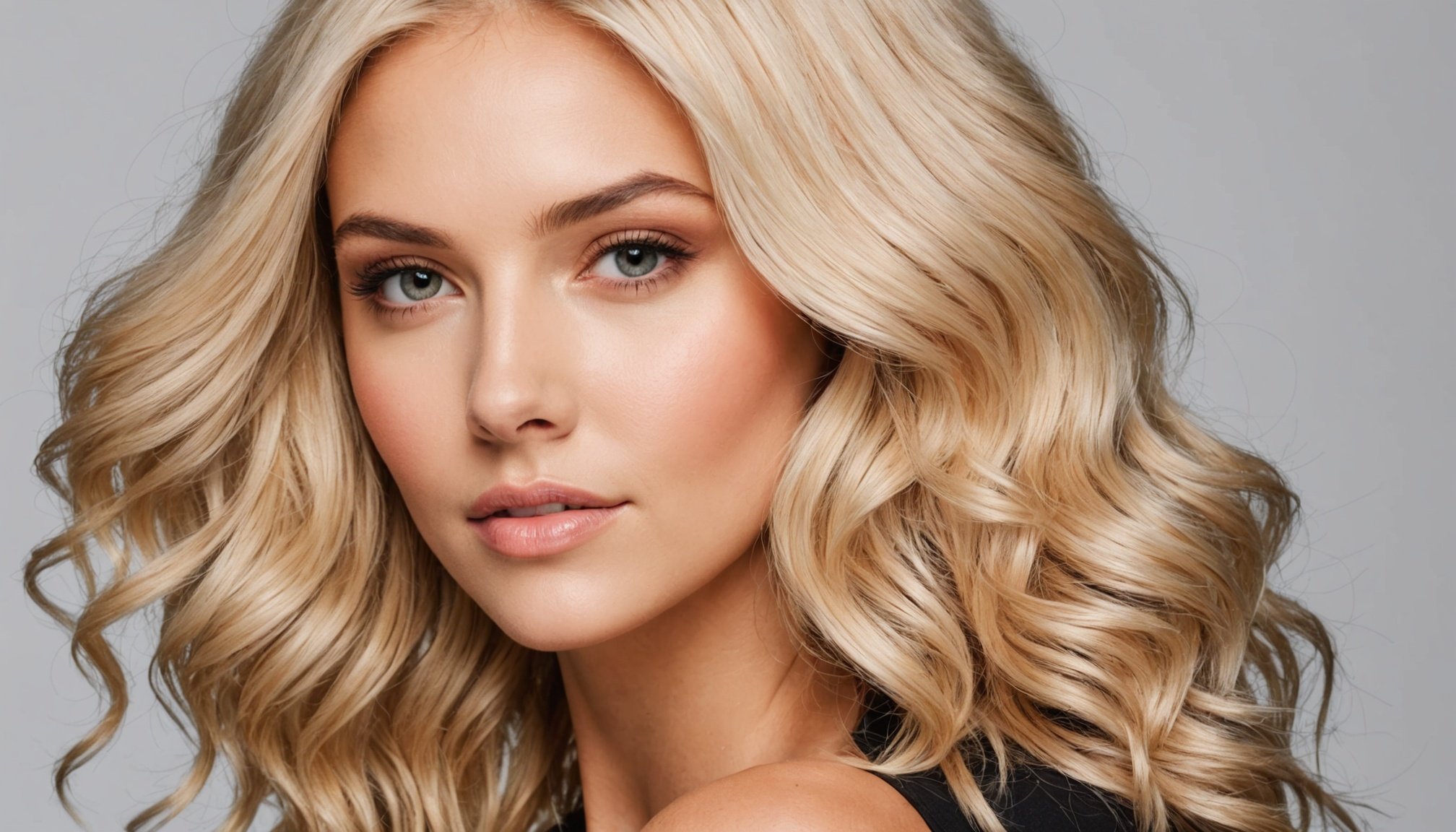Ultimate Guide to At-Home Hair Bleaching: Top Tips for Safe, Damage-Free Results!
Preparing for the Bleaching Process
Before you embark on the journey of transforming your hair into a stunning blonde shade, it’s crucial to prepare both your hair and yourself for the process. Here are some key steps to ensure you’re ready for a successful and safe at-home hair bleaching experience.
Assess Your Hair Condition
Bleaching your hair is a chemical process that can be harsh, especially if your hair is already damaged or processed. It’s essential to assess the condition of your hair before proceeding. If your hair is dry, damaged, or has been recently colored or chemically treated, it’s best to wait for a few months to allow it to recover. As advised by hair care experts, “Bleach works best on virgin and unprocessed hair. Your hair is also more susceptible to damage if you reprocess it too soon”[4].
Also to see : Flattering hairstyles for women over 50 with fine hair: unveil stunning looks that enhance your beauty
Prepare Your Hair for Bleaching
To prepare your hair, stop using heat styling tools and avoid shampoos and products that contain sulfates and alcohol, as these can strip your hair of its natural moisture. Start using a hydrating conditioner at least two weeks before the bleaching process to help restore your hair’s health. This pre-bleach care can significantly reduce the risk of damage during and after the bleaching process.
Gather Necessary Tools and Products
Make sure you have all the necessary tools and products before starting the bleaching process. Here is a detailed list of what you will need:
Also to read : Elevate your weekend look: a guide to effortlessly stylish blazer outfits for a laid-back vibe
- Bleach Powder and Developer: Choose the right bleach and developer for your hair type and the desired color outcome. The developer comes in different volumes (e.g., 10 volume, 20 volume), and the right volume depends on how much you want to lighten your hair[1][3][4].
- Plastic Gloves: Protect your hands from the harsh chemicals in the bleach.
- Old Clothes: Wear clothes you don’t mind ruining.
- Dye Brush: For applying the bleach mixture.
- Aluminum Foil or Shower Cap: To cover your hair during the bleaching process.
- Shampoo and Conditioner: A mild, sulfate-free shampoo and a hydrating conditioner.
- Toner: To achieve the desired tone after bleaching.
- Patch Test Kit: To check for any allergic reactions.
The Bleaching Process: Step-by-Step Guide
Bleaching your hair at home can be a bit daunting, but with the right steps, you can achieve professional-looking results.
Step 1: Wear Protective Gear and Prepare Your Space
Wear old clothes and plastic gloves to protect yourself from the bleach. Set up your workspace in a well-ventilated area with good lighting and a mirror. This will help you see what you’re doing and ensure you apply the bleach evenly[1][3][4].
Step 2: Do a Patch Test
A patch test is crucial to check for any allergic reactions to the bleach. Mix a small amount of the bleach and developer, apply it to the inside of your elbow using a cotton swab, and wait for at least 24 hours. If there is no irritation, you are good to go[1][3][4].
Step 3: Mix the Bleach and Developer
Follow the instructions on the packaging to mix the bleach powder and developer at the correct ratio. The ratio depends on the desired lightening effect and your hair type. For example, a higher volume developer will lighten your hair more but can also cause more damage[1][3][4].
Step 4: Apply the Bleach Mixture
Section your hair and apply the bleach mixture starting from the tips and mid-lengths, as these areas take longer to develop than the roots. Use a dye brush to apply the bleach, and make sure to keep it about 1-2 inches away from your scalp to avoid irritation[1][3][4].
Step 5: Process the Bleach
Leave the bleach on your hair for the recommended time, which can range from 30 minutes to an hour, depending on your hair color and the strength of the peroxide used. For dark hair, you may need to leave it on longer or apply the bleach in multiple sessions, allowing two weeks between each session to minimize damage[1][3][4].
Step 6: Rinse and Shampoo
Rinse the bleach out thoroughly with warm water and shampoo your hair with a mild, sulfate-free shampoo. This step is crucial in removing all the bleach residue from your hair[1][3][4].
Step 7: Apply Toner
After bleaching, your hair may have brassy or yellow tones. Apply a toner to neutralize these tones and achieve a cool, white hue. Leave the toner on for 15-30 minutes before rinsing it out thoroughly[1][3][4].
Step 8: Condition Your Hair
Apply a hydrating conditioner to help repair and restore moisture to your hair after the bleaching process. This step is not optional; it’s essential for maintaining the health and integrity of your hair[1][3][4].
Preventing Scalp Damage and Burns
Scalp damage and burns are common risks associated with hair bleaching, especially if not done correctly.
Understanding the Risks
Bleach is highly alkaline and can remove the natural oils from your scalp, altering its pH and making it vulnerable to harm. The heat produced during the chemical reaction can cause mild to serious burns if the bleach is left on the scalp for too long or applied incorrectly[2].
Tips for Safe Application
- Use Protective Barriers: Use foils or a cap to protect your scalp from coming into contact with the bleach.
- Apply Bleach Carefully: Use a brush to apply the bleach, keeping it away from your scalp. Work in small sections to avoid overlapping and ensure even application[2].
- Check Processing Time: Follow the recommended processing time and check your scalp every 10-15 minutes to avoid over-processing and chemical burns[2].
- Avoid Frequent Bleaching: Allow your scalp and hair to heal between bleaching sessions. A good rule of thumb is to leave 6-8 weeks between bleach applications[2].
Post-Bleach Care: Maintaining Healthy Hair
After bleaching your hair, it’s crucial to maintain a good hair care routine to prevent further damage and keep your hair healthy.
Use Gentle Products
Switch to a mild, sulfate-free shampoo and a hydrating conditioner. Avoid using heat styling tools and opt for a wide-tooth comb or a detangling brush to minimize breakage[3][4].
Hydrate and Nourish
Use a hydrating hair mask once or twice a week to restore moisture and shine to your hair. You can also use hair oils before washing to help lock in moisture and protect your hair from further dryness[3][4].
Protect from the Sun
The sun can aggravate a delicate scalp, especially after bleaching. Use a wide-brimmed hat or scarf when you go outside to protect your scalp from UV rays[2].
Common Mistakes to Avoid
Here are some common mistakes people make when bleaching their hair at home and how to avoid them:
- Over-Processing: Leaving the bleach on for too long can cause significant damage and burns. Always follow the recommended processing time and check your hair regularly[1][2][4].
- Incorrect Application: Applying bleach too close to the scalp or overlapping previously treated areas can cause irritation and burns. Use a brush to apply the bleach carefully and work in small sections[1][2][4].
- Insufficient Aftercare: Not using a hydrating conditioner after bleaching can lead to dry, brittle hair. Always apply a conditioning treatment after rinsing out the bleach[1][3][4].
When to Seek Professional Help
While bleaching your hair at home can be done safely with the right precautions, there are times when it’s best to seek professional help.
If You’re Unsure
If you’re new to hair bleaching or unsure about the process, it’s best to consult a professional hair stylist. They have the training and experience to minimize scalp damage and achieve the desired results[2].
For Complex Color Changes
If you’re looking to make a significant color change, such as going from dark hair to platinum blonde, it’s often best to seek professional help. Professionals can guide you through the process and ensure the best possible outcome[1][3][4].
Bleaching your hair at home can be a rewarding experience if done correctly. By following the steps outlined above, preparing your hair and scalp, and taking the necessary precautions, you can achieve stunning, damage-free results. Remember, patience and careful application are key to a successful hair bleaching process.
Practical Insights and Actionable Advice
Here are some practical tips and advice to keep in mind when bleaching your hair at home:
- Be Patient: Bleaching your hair, especially dark hair, can take time. Be patient and allow the bleach to work without rushing the process.
- Use High-Quality Products: Choose reputable brands and high-quality products to ensure the best results and minimize damage.
- Follow Instructions: Always follow the instructions on the packaging and take the necessary precautions to avoid irritation and burns.
- Hydrate and Nourish: Use hydrating products and avoid heat styling tools to keep your hair healthy and moisturized after bleaching.
By following these tips and being mindful of the potential risks, you can achieve the blonde hair of your dreams safely and effectively at home.
Table: Comparing Different Bleach Developers
Here is a comparative table to help you choose the right developer for your hair bleaching needs:
| Developer Volume | Lightening Effect | Recommended For | Potential Damage |
|---|---|---|---|
| 10 Volume | 1-2 levels of lift | Fine or damaged hair | Minimal |
| 20 Volume | 2-3 levels of lift | Normal hair | Moderate |
| 30 Volume | 3-4 levels of lift | Thick or coarse hair | High |
| 40 Volume | 4+ levels of lift | Very dark hair | Very High |
Detailed Bullet Point List: Post-Bleach Hair Care Routine
Here is a detailed list of steps to follow for your post-bleach hair care routine:
- Use a Mild Shampoo: Switch to a sulfate-free shampoo to avoid stripping your hair of its natural oils.
- Apply a Hydrating Conditioner: Use a hydrating conditioner after every wash to restore moisture and shine to your hair.
- Avoid Heat Styling Tools: Minimize the use of heat styling tools like flat irons, curling irons, and blow dryers to prevent further damage.
- Use a Wide-Tooth Comb: Use a wide-tooth comb or a detangling brush to minimize breakage and tangles.
- Apply a Hair Mask: Use a hydrating hair mask once or twice a week to restore moisture and shine to your hair.
- Protect from the Sun: Use a wide-brimmed hat or scarf to protect your scalp from UV rays.
- Use Hair Oils: Apply hair oils before washing to help lock in moisture and protect your hair from further dryness.
By following these steps and tips, you can ensure your bleached hair remains healthy, vibrant, and damage-free.






